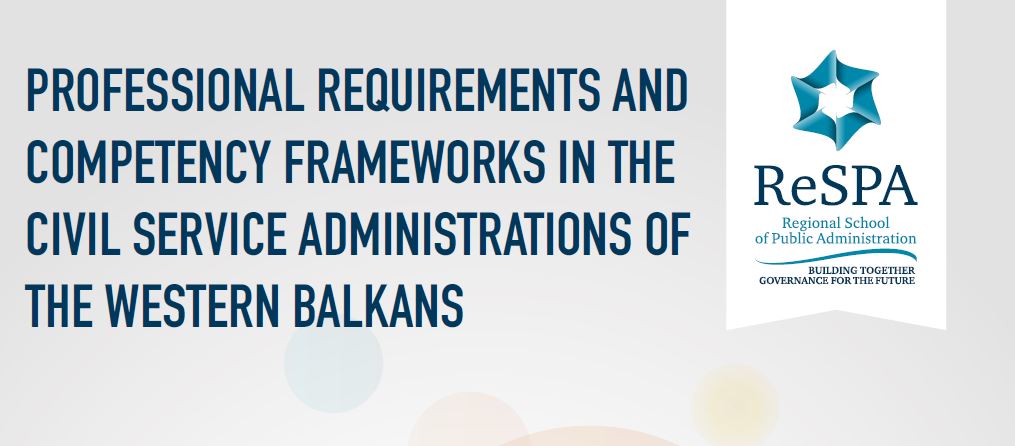
The Regional School of Public Administration (ReSPA) has published a study for assessing the scope of implementation of professional requirements and competence frameworks at the central level in the civil service administrations of the Western Balkan countries.
The study also assessed their effectiveness in supporting key aspects of human resource management (HRM) in public administrations.
Since the quality of most HRM tools largely depends on the professional requirements set for civil servants, it is important to determine whether these requirements are meaningful and relevant and whether all the necessary data for the application of such tools are provided.
The scope of this study extends beyond the framework of behavioral competencies to analyze the professional requirements of the civil service in accordance with the knowledge, skills, attitudes and the Model of Other Attributes (KSAO) for achieving a broader and deeper understanding of what is expected of civil servants in terms of professional requirements and competencies.
The aim of the study was to test the following five hypotheses about the current state of affairs in the business of providing administration services to civil society of the Western Balkans:
– Job requirements are likely to be mostly knowledge-based, neglecting other components of the KSAO model
– That more complex and sophisticated approaches to describing job requirements are not likely to be widely used
– That the application of more complex approaches is likely to be challenging because the current categorization of jobs is too general, which makes it difficult to determine profile competencies with sufficient specificity
– That the existing KSAO are unlikely to be aligned with the future skills required of civil servants
– Although well-designed selection, evaluation and development systems may be in place, their effectiveness is likely to be limited because KSAOs do not establish a strong enough basis for their implementation.
Given that the professional requirements are primarily determined by job descriptions, the first step of the analysis was to assess whether the ways in which jobs are valued and categorized in current job descriptions provide sufficient input data to set meaningful KSAOs for each job.
